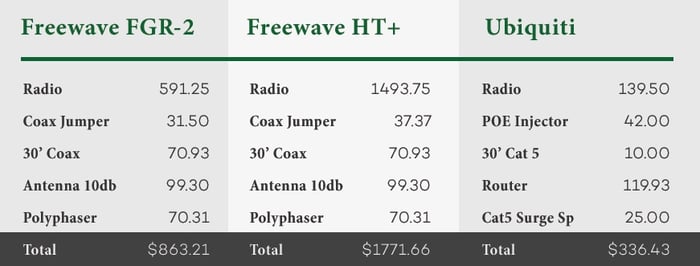The Freewave radio, along with its primary competitor, MDS radios, have been the standard for field automation for some time. The most common being the Freewave FGR-2 and the MDS Transnet.
Their typical max speed is around 0.1152 Mbps. For comparison’s sake, an internet connection of 3 Mbps, which is not overly fast these days, is 26 times faster than the radio's capabilities. When compared to a Ubiquiti radio, whose max speed is 150 times faster, there is no comparison.
In the past few years, Freewave and MDS have introduced “Ethernet” radios, which have a slightly limited distance compared to their counterparts, but can achieve speeds of 1 Mbps; however, their base price is close to triple. Again, compared to the Ubiquiti, which is still 150 times faster, there is no comparison.
The obvious question is: Why do you need that kind of speed? The answer is two-fold. The increased bandwidth allows for more reliability and the higher bandwidth allows you to pass video along with your normal data traffic. It even allows, if wanted, WiFi internet access at the wellsite.
More importantly the increased speed comes at a lower cost as illustrated in the chart below.
The 3 columns below outline radios along with typical ancillary items needed for radio transmission and the retail pricing of each:
We have deployed large numbers of both styles (500+ of each) and durability is near the same with the edge going to Ubiquiti.
Speed, price and durability all go to Ubiquiti. For our customers who do not have to contend with legacy networks with hundreds of old style radios, the choice is always Ubiquiti.
If you are interested in employing a modern automation system or upgrading your current system at your oil and gas facility, contact Champion Automation & Measurement today to schedule an appointment!
